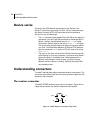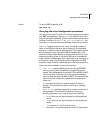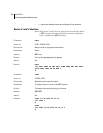
CHAPTER 4
Using terminal commands
29
EXAMPLE To set the RSSI threshold to 58:
SET RSSI 58
Querying the actual configuration parameters
You can query an addIT to find out its actual configuration parame-
ters (GET the parameter). Typing OWNID, for instance returns the
actual ID an addIT answers to (it should be the same as the one on
its label). In addition to OWNID, PMP, SLOT, FREQ, and RSSI, the
command VER returns the current software version of the device.
The RSSI commands returns two values: the actual measured
value of the RSSI and the value set as threshold. As noted else-
where, the threshold must be approximately 30% higher than the
actual measured value. The actual RSSI is unstable due to the
channel’s random noise, receiver’s internal noise, and/or to trans-
missions just taking place. If the actual RSSI value is consistently
higher than the programmed value, something must be wrong, or
the channel is very noisy (however, before readjusting the RSSI
threshold, check this with a handheld radio receiver or a scanner).
Other commands available in terminal mode are:
• DUMP addr—displays 256 bytes of the internal EEPROM
memory, starting with the address addr (specified as hex
values). Valid addresses for the model A720 are B600 to B9FF.
The last 16 slots of data (for 15-minute slots, that makes 4
hours of data) are stored at B900 to B9FF. The remainder are
used for internal configuration parameters or reserved for
future use.
• RX—switches the device to receive mode until a key is
pressed. This command is used for trimming or checking
purposes.
• XMIT param—switches the device to transmit mode until a
key is pressed. This command is used for trimming or
checking purposes. param may be any of the following:
• 0—a 2 kHz tone will be modulated on the transmitted
carrier
• 1—a 1 kHz tone will be modulated on the transmitted
carrier
• T—a mixture of 1 and 2 kHz test tones
• Not given—an unmodulated carrier will be transmitted


















